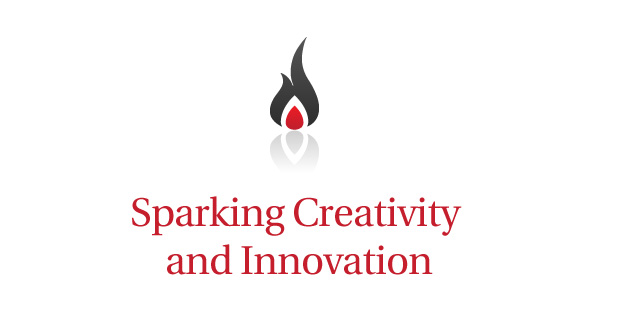Most people are born creative. As children, we revel in imaginary play, ask outlandish questions, draw blobs and call them dinosaurs. But over time, because of socialization and formal education, a lot of us start to stifle those impulses. We learn to be warier of judgment, more cautious, more analytical. The world seems to divide into “creatives” and “noncreatives,” and too many people consciously or unconsciously resign themselves to the latter category.
And yet we know that creativity is essential to success in any discipline or industry. According to a recent IBM survey of chief executives around the world, it’s the most sought-after trait in leaders today. No one can deny that creative thinking has enabled the rise and continued success of countless companies, from start-ups like Facebook and Google to stalwarts like Procter & Gamble and General Electric.
Students often come to Stanford University’s “d.school” (which was founded by one of us—David Kelley—and is formally known as the Hasso Plattner Institute of Design) to develop their creativity. Clients work with IDEO, our design and innovation consultancy, for the same reason. But along the way, we’ve learned that our job isn’t to teach them creativity. It’s to help them rediscover their creative confidence—the natural ability to come up with new ideas and the courage to try them out. We do this by giving them strategies to get past four fears that hold most of us back: fear of the messy unknown, fear of being judged, fear of the first step, and fear of losing control.
We’ve used the same approach over the past 30 years to help people transcend the fears that block their creativity. You break challenges down into small steps and then build confidence by succeeding on one after another. Creativity is something you practice, not just a talent you’re born with. The process may feel a little uncomfortable at first, but the discomfort quickly fades away and is replaced with new confidence and capabilities.
Fear of the Messy Unknown
Creative thinking in business begins with having empathy for your customers (whether they’re internal or external), and you can’t get that sitting behind a desk. Yes, we know it’s cozy in your office. Everything is reassuringly familiar; information comes from predictable sources; contradictory data are weeded out and ignored. Out in the world, it’s more chaotic. You have to deal with unexpected findings, with uncertainty, and with irrational people who say things you don’t want to hear. But that is where you find insights—and creative breakthroughs. Venturing forth in pursuit of learning, even without a hypothesis, can open you up to new information and help you discover nonobvious needs. Otherwise, you risk simply reconfirming ideas you’ve already had or waiting for others—your customers, your boss, or even your competitors—to tell you what to do.
Fear of Being Judged
If the scribbling, singing, dancing kindergartner symbolizes unfettered creative expression, the awkward teenager represents the opposite: someone who cares—deeply—about what other people think. It takes only a few years to develop that fear of judgment, but it stays with us throughout our adult lives, often constraining our careers. Most of us accept that when we are learning, say, to ski, others will see us fall down until practice pays off. But we can’t risk our business-world ego in the same way. As a result, we self-edit, killing potentially creative ideas because we’re afraid our bosses or peers will see us fail. We stick to “safe” solutions or suggestions. We hang back, allowing others to take risks. But you can’t be creative if you are constantly censoring yourself.
Half the battle is to resist judging yourself. If you can listen to your own intuition and embrace more of your ideas (good and bad), you’re already partway to overcoming this fear. So take baby steps. Instead of letting thoughts run through your head and down the drain, capture them systematically in some form of idea notebook. Keep a whiteboard and marker in the shower. Schedule daily “white space” in your calendar, where your only task is to think or take a walk and daydream. When you try to generate ideas, shoot for 100 instead of 10. Defer your own judgment and you’ll be surprised at how many ideas you have—and like—by the end of the week.
Fear of the First Step
Even when we want to embrace our creative ideas, acting on them presents its own challenges. Creative efforts are hardest at the beginning. The writer faces the blank page; the teacher, the start of school; businesspeople, the first day of a new project. In a broader sense, we’re also talking about fear of charting a new path or breaking out of your predictable workflow. To overcome this inertia, good ideas are not enough. You need to stop planning and just get started—and the best way to do that is to stop focusing on the huge overall task and find a small piece you can tackle right away.
Fear of Losing Control
Confidence doesn’t simply mean believing your ideas are good. It means having the humility to let go of ideas that aren’t working and to accept good ideas from other people. When you abandon the status quo and work collaboratively, you sacrifice control over your product, your team, and your business. But the creative gains can more than compensate. Again, you can start small. If you’re facing a tough challenge, try calling a meeting with people fresh to the topic. Or break the routine of a weekly meeting by letting the most junior person in the room set the agenda and lead it. Look for opportunities to cede control and leverage different perspectives.
For people with diverse backgrounds as diverse , fear—of the messy unknown, of judgment, of taking the first step, or of letting go—could have blocked the path to innovation. But instead, you can work to overcome your fears, rediscover your creative confidence, and make a difference. As Hungarian essayist György Konrád once said, “Courage is only the accumulation of small steps.” So don’t wait at the starting line. Let go of your fears and begin practicing creative confidence today.
Read the complete article by David Kelley here.
For a related video by David, go here.

Tags: Creativity, David Kelley, Innovation
|
What is MyVisionRoom? > | Back to Leadership >























